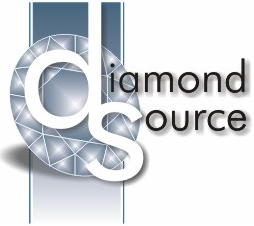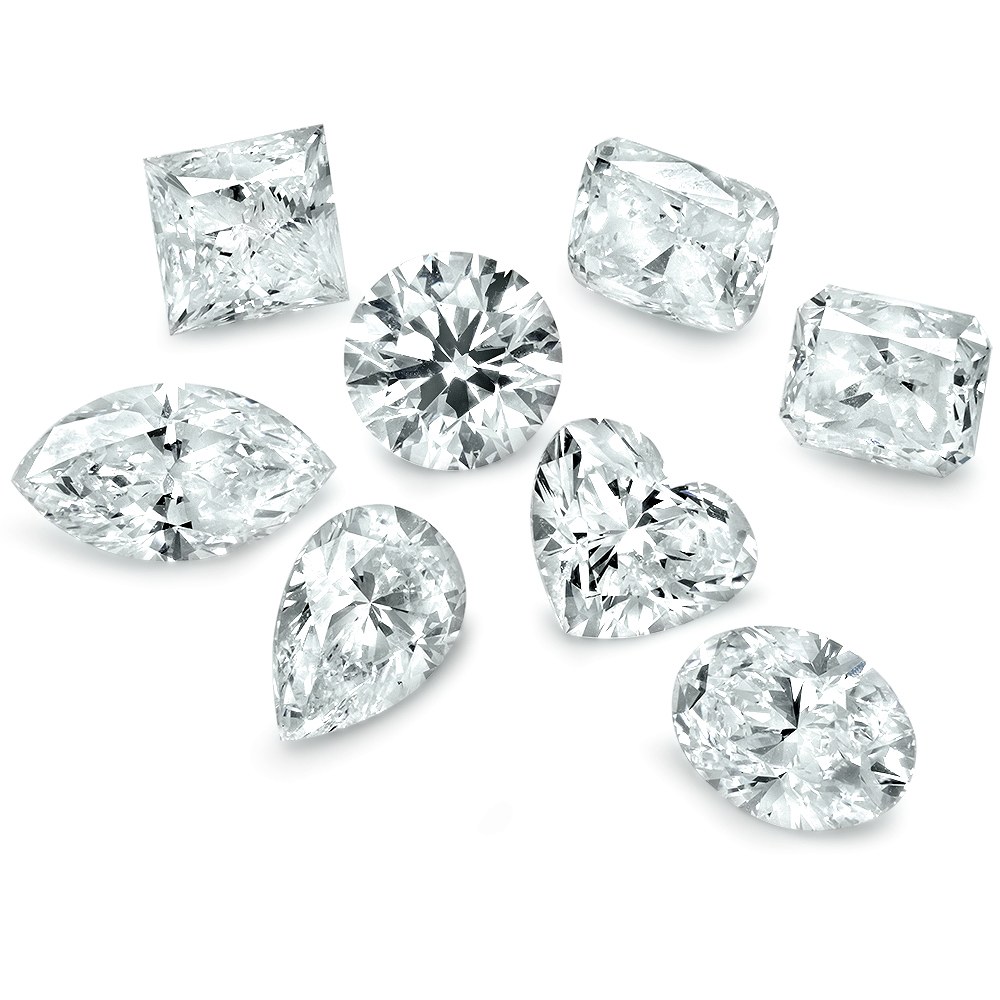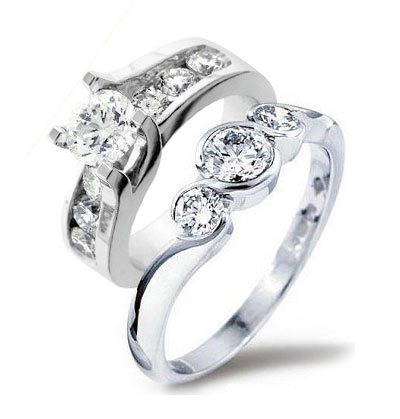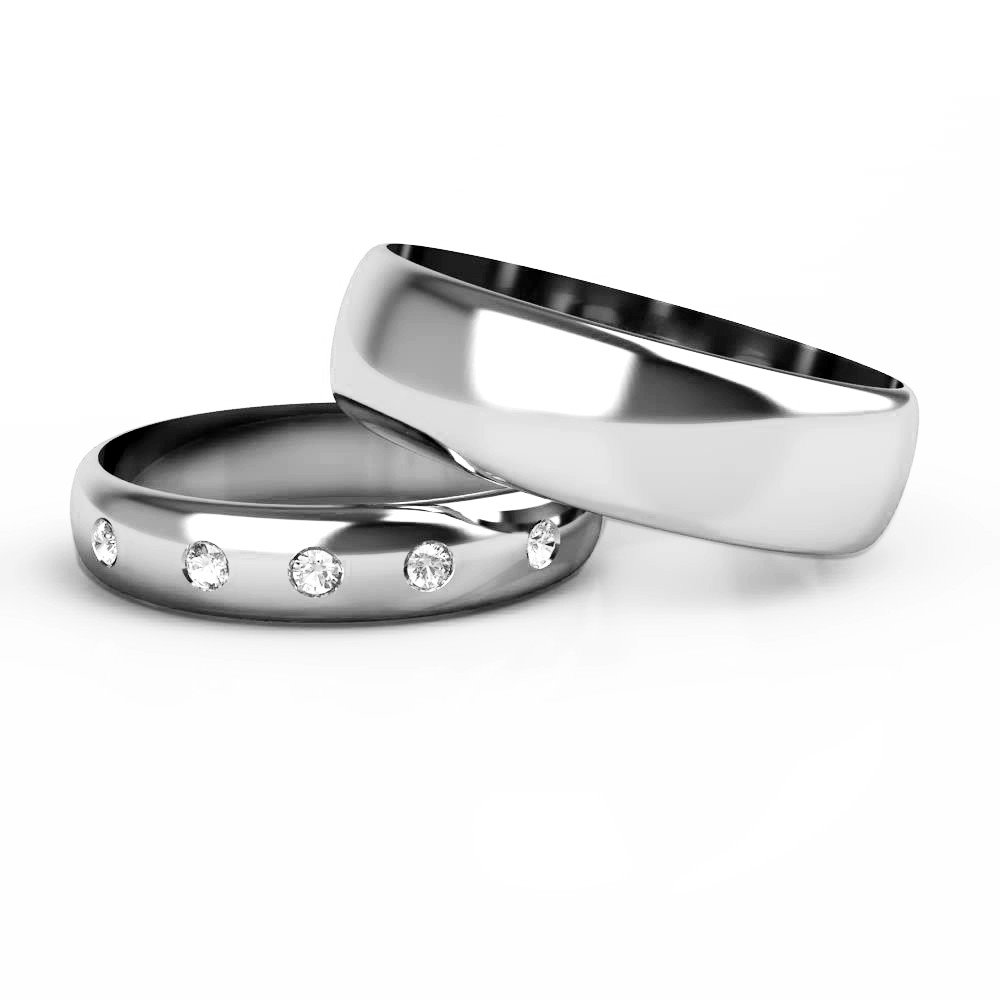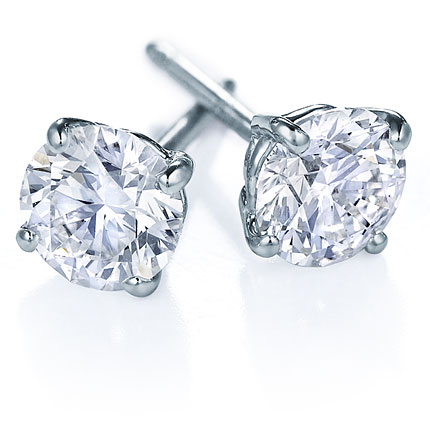We offer READY TO SHIP JEWELLERY - View Collections
Buying a Diamond – What to remember
When you decide to invest in this gorgeous gem, you need to remember that it is just that – an investment. Seeing as diamonds last forever, this will be a buy you shop around for and make sure about. Diamonds are rated by the 4 C's namely: cut, colour, clarity and carat.
The cut refers to the diamonds reflective qualities – not its shape. A good cut is most important to a diamond’s brilliance. The angles and finish of the gem are what determine its reactions to light, which leads to the brilliance of the diamond.
What to look for: Check for cracks and chips. If it is cut properly, the light should reflect off the top of the stone and reflect within the gem itself, giving a brilliant appearance.
The colour refers to the presence or absence of colour. This does not refer to rare coloured diamonds. For clear diamonds – also called white diamonds – jewelers speak of a diamond's colour.
Clearer diamonds, like a clear window, let more light pass through it. Therefore, clearer diamonds have more sparkle and more value. Diamonds that are completely colourless is very rare, which makes it most valuable. Diamonds that are completely colourless are rated D, E or F. Diamonds that are rated yellow or brown are rated from S to Z. All others fall somewhere in the middle.
Clarity refers to the presence of identifying characteristics on and within a diamond. There are two types of flaws, inclusions and blemishes. Inclusions are internal flaws and blemishes are surface flaws. Flaws in and on a diamond may include air bubbles, non-diamond minerals, scratches, cracks, pits, and chips. The fewer flaws a diamond has, the more it is worth as flawless diamonds are rare. Clarity of a stone is related to cut. There is a rating system for this. F1 means flawless and represents perfect diamond. Other ratings are WS1 and 2, VS1 and VS2, SI and SI2 and I1, I2 and I3, with more flaws as you go down the line. The V, S and I stand for very, slightly and included. If at all possible, it is always best try and see the stone before it is set as it is easy to hide flaws with a setting.
Carat refers to the size of the stone. One carat is defined as 200 milligrams (about 0.007 ounce avoirdupois). The point unit – equal to one one hundredth of a carat (0.01 carat, or 2mg) – is commonly used for diamonds of less than one carat. If the diamond is bigger, carat weight will be more which will cost more. A ring that has large solitaire diamond will be more expensive than a ring with several smaller diamonds even if the total carat weight is the same.
It is important to see the certificate of the diamond you are going to purchase as this is where you will be able to see all of the above details. Unfortunately it is not possible for the laymen to see all these things with the naked eye – which is why a laboratory certifies a diamond.
Prices for diamonds roughly range from about R3 000 for a 0.27ct, E, VS2
Round brilliant-cut diamond, that's certified. To about R 5 900 for a 0.622ct., L, SI1
Round brilliant-cut diamond, that's certified. All the way up to about R1.8 million for a 6.762ct., J, VVS1 emerald-cut diamond, that's certified.
It's difficult to put a lot of prices in this article, as there are an infinite amount of possibilities when cut, colour, clarity and carat are taken in account. But for a good quality diamond' it is important to know that if it sounds to good to be true, that it probably is.
Disclaimer: These prices were correct as of April 2010 and are subject to change.
The cut refers to the diamonds reflective qualities – not its shape. A good cut is most important to a diamond’s brilliance. The angles and finish of the gem are what determine its reactions to light, which leads to the brilliance of the diamond.
What to look for: Check for cracks and chips. If it is cut properly, the light should reflect off the top of the stone and reflect within the gem itself, giving a brilliant appearance.
The colour refers to the presence or absence of colour. This does not refer to rare coloured diamonds. For clear diamonds – also called white diamonds – jewelers speak of a diamond's colour.
Clearer diamonds, like a clear window, let more light pass through it. Therefore, clearer diamonds have more sparkle and more value. Diamonds that are completely colourless is very rare, which makes it most valuable. Diamonds that are completely colourless are rated D, E or F. Diamonds that are rated yellow or brown are rated from S to Z. All others fall somewhere in the middle.
Clarity refers to the presence of identifying characteristics on and within a diamond. There are two types of flaws, inclusions and blemishes. Inclusions are internal flaws and blemishes are surface flaws. Flaws in and on a diamond may include air bubbles, non-diamond minerals, scratches, cracks, pits, and chips. The fewer flaws a diamond has, the more it is worth as flawless diamonds are rare. Clarity of a stone is related to cut. There is a rating system for this. F1 means flawless and represents perfect diamond. Other ratings are WS1 and 2, VS1 and VS2, SI and SI2 and I1, I2 and I3, with more flaws as you go down the line. The V, S and I stand for very, slightly and included. If at all possible, it is always best try and see the stone before it is set as it is easy to hide flaws with a setting.
Carat refers to the size of the stone. One carat is defined as 200 milligrams (about 0.007 ounce avoirdupois). The point unit – equal to one one hundredth of a carat (0.01 carat, or 2mg) – is commonly used for diamonds of less than one carat. If the diamond is bigger, carat weight will be more which will cost more. A ring that has large solitaire diamond will be more expensive than a ring with several smaller diamonds even if the total carat weight is the same.
It is important to see the certificate of the diamond you are going to purchase as this is where you will be able to see all of the above details. Unfortunately it is not possible for the laymen to see all these things with the naked eye – which is why a laboratory certifies a diamond.
Prices for diamonds roughly range from about R3 000 for a 0.27ct, E, VS2
Round brilliant-cut diamond, that's certified. To about R 5 900 for a 0.622ct., L, SI1
Round brilliant-cut diamond, that's certified. All the way up to about R1.8 million for a 6.762ct., J, VVS1 emerald-cut diamond, that's certified.
It's difficult to put a lot of prices in this article, as there are an infinite amount of possibilities when cut, colour, clarity and carat are taken in account. But for a good quality diamond' it is important to know that if it sounds to good to be true, that it probably is.
Disclaimer: These prices were correct as of April 2010 and are subject to change.
